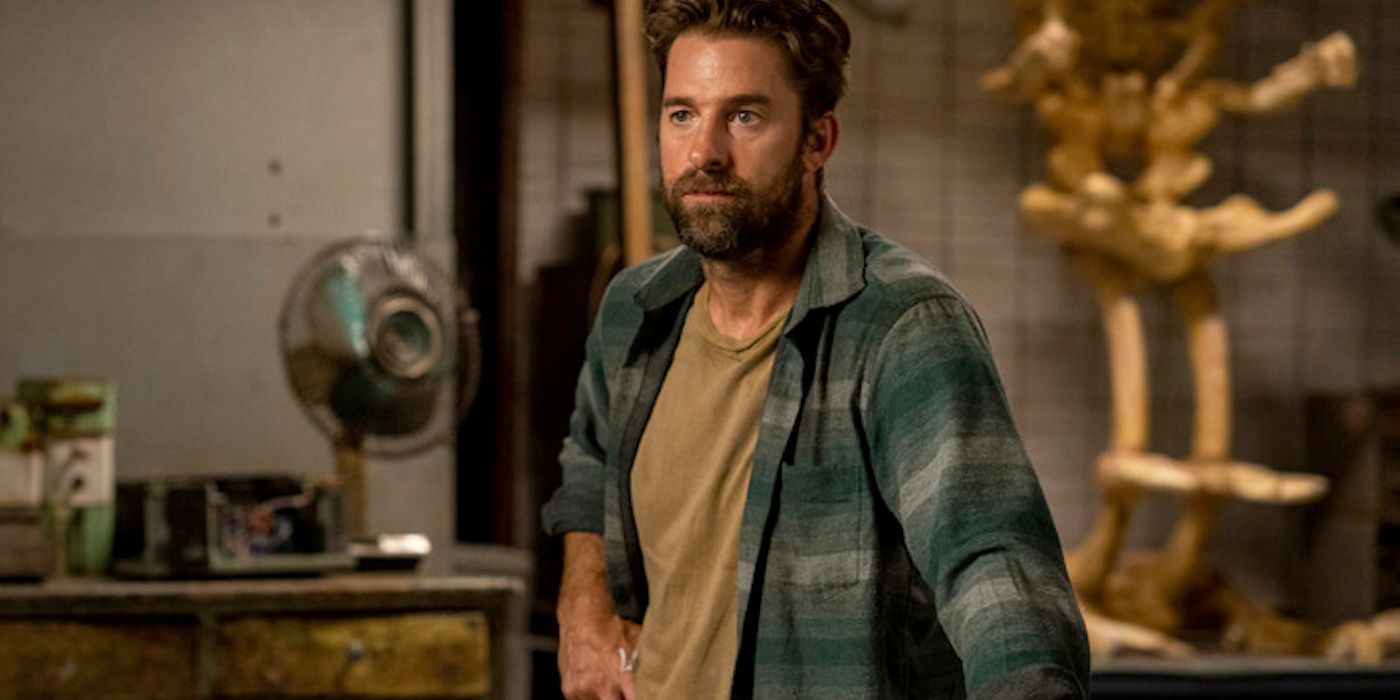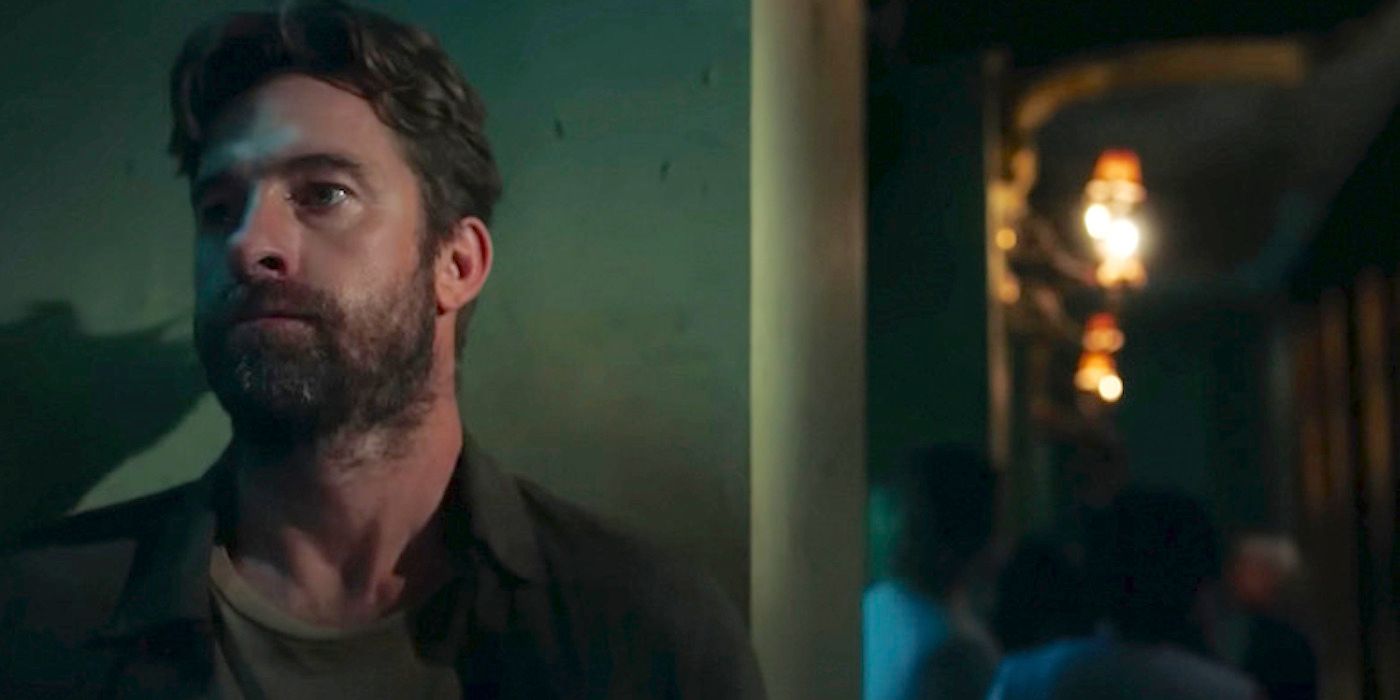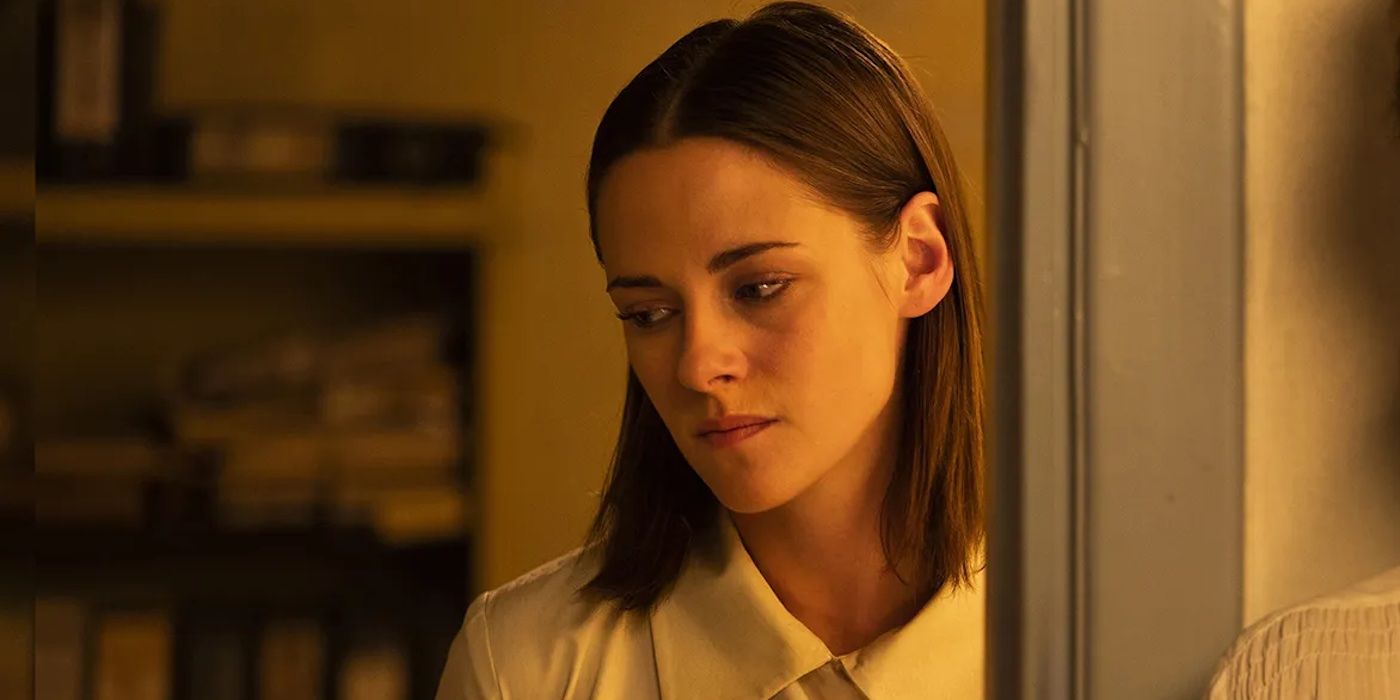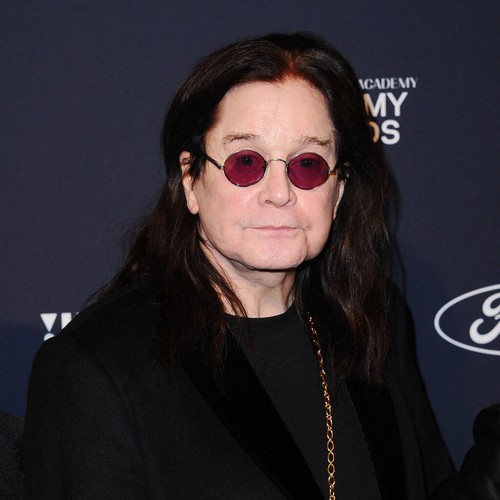There are a lot of moments in Crimes of the Future, the decades-in-development masterstroke by the master of body horror David Cronenberg, that feel like it was written just the other day. You can see it in the way a character like Saul Tenser (Viggo Mortensen), who makes art with his organs, is so quick to judge other artists like him who choose to embrace the changes they make to their own flesh.. This is a future that looks and feels very similar to our current day, as the debate about who exactly should be allowed to control what we do to our own bodies continues to rear its head into our reality with topics like abortion and trans rights. It’s a prevalent theme in Cronenberg’s filmography that only grows in newer ways with Crimes of the Future, and the catalyst for that growth lies in what’s arguably the film’s most important character: Lang Dotrice (Scott Speedman).
Much like the other great films from Cronenberg, Crimes of the Future has the viewer questioning what exactly it is they’re watching until the very last frame, creating a tangled web of a narrative that slowly unravels its true motives. While there are many other examples where this can be seen (more on Kristen Stewart shortly), this is vividly showcased in the arc that Lang has throughout the film. Lang is a character who has to rely on products like synth-bars for nourishment, which are manufactured bars of plastic that are toxic to normal humans. He serves as the physical antithesis to Saul’s views on adaptation; where Saul’s surgeries act as both artistic expression and a way to combat his Accelerated Evolution Syndrome (a condition where his body can create new organs), Lang and his followers assist themselves and others like them by providing the necessary care needed for their new vessels.
While an argument can be made that Saul’s decision to cut up his body is his way of controlling it, one can also argue that his control is a veiled sense of hatred against his own genetics. When he isn’t feeling pleasure from his artistic procedures, he’s in constant pain from the biomechanical devices he uses to soothe his condition. His involvement with the police leaves him questioning if what he’s doing is even right. He walks along the streets as someone who wants to be a normal person but is at odds with his body because it’s constantly telling him that that will never be the case. Lang and the people like him are on the opposite side of that emotional spectrum, as he is accepting of the future that’s coming and sees ways to help others with their transition. Unfortunately, the problem is that the people in power don’t see it like that at all.
It’s made clear from the film’s cruel opening of a child being smothered by his mother that there are people in this world that loathe those who are different from them. The person who is supposed to be the figure that protects their progeny is the one who murders them. The mother is shown to have no remorse for her crime and labels her child as a “mistake” to humankind. That child is later revealed to be Brecken (Sozos Sotiris), Lang’s son, and the mother (Lihi Kornowski), his ex-wife. Brecken was the only known person born with the ability to naturally consume plastic. It’s a discovery that could serve as a counterpoint to the government’s stance on human evolution. When Saul and Caprice (Léa Seydoux) agree to perform an autopsy on Brecken’s body, it would serve as the definitive proof that the world is capable of surviving freely with the looming change in their biology. But the people that are unlike them see Lang and his people as lesser and are willing to do what they can to, literally, murder any glimpse of that from happening.
That prejudice can be seen through the pair of women who assassinate Lang in the film’s climax, turning him into another martyr simply because he believed that there should be no oversight in what is the new human nature. Even Timlin (Stewart) has shades to her character that indicate that she is down for the cause, but those intentions are shown to be fake when it’s revealed that she tatted Brecken’s organs, ruining the show and stripping the world from realizing the truth.
Lang understood who he really was, which should give him all the control he would need to comfort that, but he lived in a world that wanted to silence him instead. The events that he goes through play like a tragedy for those who wish to do what they want with their bodies, and a striking reminder of why his perspective is important to protect and acknowledge. It’s a reminder that Saul presumably learns by the end of the film, his tear shining as a potential glimmer that, despite the opposition, people can finally begin to understand. The character of Lang clarifies the film’s view on identity and biology by stating that he is, simply, him. His own body, with his own choice.
























































![Key Metrics for Social Media Marketing [Infographic] Key Metrics for Social Media Marketing [Infographic]](https://www.socialmediatoday.com/imgproxy/nP1lliSbrTbUmhFV6RdAz9qJZFvsstq3IG6orLUMMls/g:ce/rs:fit:770:435/bG9jYWw6Ly8vZGl2ZWltYWdlL3NvY2lhbF9tZWRpYV9yb2lfaW5vZ3JhcGhpYzIucG5n.webp)


















